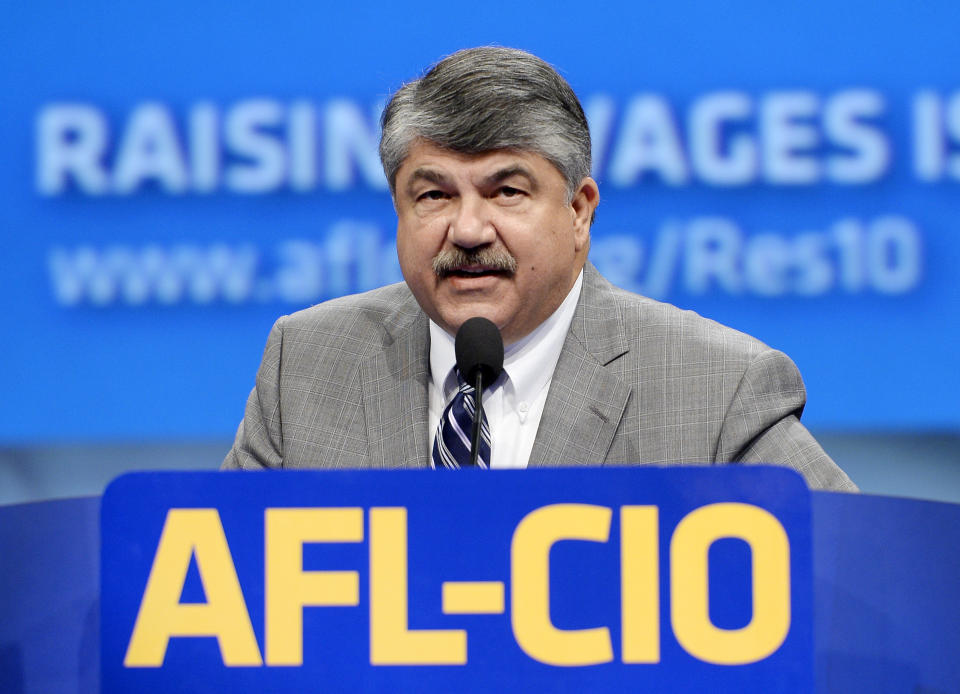New AFL-CIO report shows pay disparity between CEOs, workers

The average S&P 500 CEO made 287 times what a typical American worker made last year, according to the AFL-CEO’s annual Executive Paywatch report.
“We believe this disparity represents a fundamental problem with our economy,” said Liz Shuler, AFL-CIO Secretary-Treasurer. “For too long, corporate greed and rigged economic rules have created a relentlessly growing pay gap between CEOs and the rest of us.”
The new report says CEOs of companies in the S&P 500 index made $14.5 million on average in 2018, compared to $13.94 million the year prior.
“Over the past decade, the average S&P 500 CEO’s pay increased by more than $5 million, while the average worker over the past decade only saw an increase of less $800 a year,” said Shuler on a call with reporters.
The AFL-CIO has put together the database of CEO pay for decades. It previously compared CEO pay to the average pay of production and nonsupervisory workers, according to the Bureau of Labor Statistics.
But a provision in the Dodd-Frank financial regulations now requires companies to disclose the ratio of CEO pay to median worker pay.
“We finally have company-specific data,” said Brandon Rees, AFL-CIO Deputy Director for Corporations and Capital Markets. “The Executive Paywatch ratio of CEO to worker pay is the simple arithmetic mean – the average – of the company-disclosed pay ratios. So this is what the companies themselves say their ratio of CEO to worker pay is.”
The National Retail Federation argues the requirement is unfair because it singles out industries that have high percentages of part-time, seasonal and entry-level employees. The NRF says the rule distorts retailers’ pay ratios.
Of the S&P 500 companies in the AFL-CIO’s database, Gap (GPS) has the highest CEO-to-worker ratio of 3,566 to 1 — with the median worker making $5,831.
The highest paid CEO on the list was David Zaslav of Discovery (DISCA), who raked in more than $129 million in 2018. That’s 1,511 times what the median worker made.
Last year, Copart (CPRT) had the narrowest gap between CEO and worker pay of all S&P 500 companies. Its CEO made six times the median worker pay.
AFL-CIO reports Berkshire Hathaway (BRK-A) came in second, with Warren Buffett making seven times the median worker pay.
Median vs. average pay
But critics say the AFL-CIO’s findings are flawed and misleading.
Mark Perry with American Enterprise Institute, a conservative think tank, argues the labor group should consider the median CEO pay instead of the average.
According to the Wall Street Journal, median S&P 500 CEO compensation was $12.4 million last year.
Perry told Yahoo Finance the AFL-CIO should also use the median CEO to worker ratio, instead of the average ratio.
“Since they’re looking at median pay for the employees, then it would make sense to look at the median pay ratio,” said Perry.
Perry says companies with large amounts of part-time and seasonal workers distort the average ratio. Plus, he notes that CEOs often work far more than 40 hours each week.
“They’re comparing part-time worker pay to a CEO who is working 60 hours a week or something — so it’s not really a fair comparison,” said Perry.
Perry argues even if all of the S&P 500 CEOs distributed their salaries to the more than 100 million rank-and-file workers, individual employees would still not see much of a pay raise.
“The AFL-CIO has fallen here hook, line and sinker for the zero-sum, fixed pie fallacy, one of the most common economic mistakes that falsely assumes that there’s a static fixed pie and therefore one party can gain (get a bigger slice) only at the expense of another,” said Perry in a post on AEI’s website.
Jessica Smith is a reporter for Yahoo Finance based in Washington, D.C. Follow her on Twitter at @JessicaASmith8.
New bill would force big tech to reveal the value of your data
Senators want to roll back tax cuts to create jobs for long-term unemployed
Republican senator: Facebook is 'expanding their monopoly' with Libra
Read the latest financial and business news from Yahoo Finance
Follow Yahoo Finance on Twitter, Facebook, Instagram, Flipboard, LinkedIn,YouTube, and reddit.
